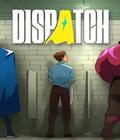For a time, it seemed like Sony had forgotten about Sly Cooper, the third member of its seemingly unstoppable PS2 platforming force. When the transition to the PS3 occurred, Sly was unceremoniously left behind, relegated to sidekick status in the ill-fated PlayStation Move Heroes. His fortunes changed when Sanzaru Games was commissioned to do the HD remakes of the trilogy because Sanzaru had taken the time to secretly make a sequel before telling Sony. Its brash move was a lucky one, as Sony approved and greenlit Sly Cooper: Thieves in Time. When the Vita was announced, the game was also announced for the handheld, but instead of giving the job to someone else, Sanzaru decided to do the port. This would also prove to be a wise move.
The plot takes on the familiar trope of time travel, which was heavily implied at the conclusion of the last game. It has been years since Sly, Bentley and Murray completed their last caper and went their separate ways. Bentley continued working on scientific experiments, Murray went into racing, and Sly went straight and hooked up with former nemesis Carmelita Fox. Things seem to be going well, but Bentley notices that parts of the Thievius Raccoonus, the history and guidebook for Sly's family, have disappeared and are altering the present. With his legacy in trouble, it's up to Sly and the gang to go back in time, fix the transgressions to his ancestors, and set things right.
The story works well enough, but as any Sly fan will tell you, it's the humor that drives the game. The change in developers hasn't done anything to diminish that, as the title often produces one humorous situation after another, all without getting too risqué or lowbrow. The characters go a long way in making that humor stick by remaining likeable and charming. Whether it's Bentley trying and failing to show a humorous side, Murray hamming up before a fight, or Sly taunting bosses, there's rarely a moment when you won't have a smile on your face.
The game blueprint mirrors that of Sly 2 and 3 more than the first game. Again, you take control of the whole gang, with each character offering a different play style to this third-person platformer. Murray is the muscle, and most of his missions involve pure combat or the transportation of heavy objects. Bentley is the technician of the group and uses gadgetry like bombs to make his way through jobs. He also has the ability to hack terminals via minigames that represent labyrinth puzzles or twin-stick shooters, providing a nice break from the platforming action. Sly is the stealth and acrobatics portion of the gang; he can maneuver on almost any surface and can pickpocket items from just about any enemy. Together, the team creates a platforming game that mixes basic jumping and combat with a stealth element that has helped make the series unique after all these years.
The time travel gimmick turns out to be a method of introducing new playable characters. You'll eventually get Carmelita to join, along with her mostly projectile-based combat. The big draw comes from Sly's ancestors in each time period. They play exactly like Sly and even come with the same cane-based attacks, but each has at least one unique move in their arsenal. For example, Rioichi can make great leaps, crossing large chasms and avoiding traps in the process; Salim creates vertical ropes to climb; and Tennessee uses his crackshot ability to hit multiple targets. All of these Sly variations are just as fun to play and don't disrupt the game flow.
The original trio has also evolved. Sly gets the most changes thanks to the costume system, which swaps out some of his basic abilities at the press of a button. One suit gives him the power to slow down time, another lets him fire arrows, and yet another lets him reflect fireballs while protecting him from flames. Bentley and Murray may not have costumes, but they get to participate in lots of minigames. As mentioned before, Bentley has lots of hacking minigames, but he'll also be able to remotely control things, like a RC car in a sneaking mission. Meanwhile, Murray has minigames that run the gamut from fishing to a rhythm game; he's disguised as a geisha one minute and helps to train one of Sly's ancestors the next.
Putting all of this together creates a title that is enjoyable, features good gameplay, and is deceptively long. Despite the linear nature of the game, each of the time periods are quite open-ended, and while you aren't experiencing a Grand Theft Auto- or Jak II-sized game per time period, there's a lot of ground to cover. You can also visit any level you've already completed, giving you the chance to explore everything at your leisure. As expected from most platformers, there are lots of collectibles that are both easy and hard to obtain. There's also extra treasure and masks to augment your looks, all of which are nicely hidden in each level. Though you won't be able to take your ancestors with you to every time period, the suits you obtain do travel with you, and they open up lots of previously locked areas. The main quest is a decent length, but the game can be upwards of 20 hours once you factor in all of the timed treasure runs and hidden items, making the game much longer than most triple A titles on the market that don't contain a multiplayer component.
It is worth noting that the game is part of Sony's ever-growing cross-buy initiative. This means that purchasing the PS3 copy of the game, either on disc or via PSN, entitles you to the Vita copy at no extra charge. On top of that, the game features cloud saving, which was last seen in MLB 12: The Show. As long as you're in range of an Internet connection when performing saves or loads, you can start your journey on either a Vita or PS3 and then continue it on the other console with no penalty. It also means that the game's Trophy lists progress in the same manner while remaining separate, essentially giving you double the Trophies without doubling up the work. While this review concentrates specifically on the Vita version, the only way it makes sense for a player to only get the Vita version is if he only has a Vita and has no vested interest in getting Sony's home console. Otherwise, for the $40 price tag, the game becomes a real bargain.
Sanzaru Games' love and enthusiasm for the product shows, but there are a few issues with the controls. The Vita's analog sticks don't offer as much resistance as the DualShock 3, so there's a learning curve if you want to sneak up behind enemies. Even though touchpad controls are only used for bringing up a discreet on-screen compass, it is a bit of an annoyance if you don't want that hint all the time. Motion controls are also used for a number of the minigames, and while they work well, they become bothersome because neither this nor the touchpad can be disabled and replaced with other button combinations. Admittedly, the only reason these aren't as bothersome is because they don't feel tacked on. Finally, the touch-screen buttons aren't as responsive to quick presses. Boss fights that ask you to switch costumes to avoid attacks really emphasize this issue because it's almost impossible to do a costume swap on the fly without taking some damage.
The big technical problem that holds back Thieves in Time is the load times. Both the Vita and PS3 versions suffer from some long load times, which is apparent even if you grab the PS3 version from PSN. The Vita version has load times that are longer than the console counterpart, creeping up to an average of a minute on every load screen. There isn't much activity going on with the load screens, either, as the minimal amount of movement on the Sly Cooper icon makes you think that the game has frozen. The long load times hearken back to the early PSP days with games like Midnight Club 3: Dub Edition. The long load times pointed to the flaw of using optical media in portables and discouraged playing the game in quick bouts. The move to flash media should have alleviated this, but the optimization for this title proves otherwise.
Creating the port of a console game in-house means that the chances of graphical fidelity are rather high, and Sanzaru mostly succeeds at that task. The worlds are just as colorful as before and littered with lots of tiny details. The animations for both your gang and your enemies are slightly exaggerated but done tastefully, and it is fluid. The frame rate is locked at a solid 30, and the particle effects match up with the PS3 version quite nicely. Considering the power of the Vita compared to the PS3, some detail on some of the levels was toned down, and the frame rate doesn't hit the magical 60 of the PS3 version, but it still looks gorgeous on-screen. Where the game fails to impress from a graphic standpoint is with the art style. Despite adopting a color scheme that is akin to cel-shading, the graphics are lacking the requisite black outlines, robbing the title of its signature look. Also, the game is quite cut scene-heavy, and while the scenes are animated well, the compression is overdone to the point where you can see the artifacts on both busy and calm scenes. Considering that both the PS2 and PS3 versions didn't suffer from this, it is disappointing to see the Vita have these issues.
The sound for the game is, like the graphics, mixed but mostly favorable. The music evokes the jazz/big band vibe of the originals while throwing in some period-specific instruments. It not only fits the persona of a caper film, but it does so with a hint of whimsy. The effects come out crisp, and the vocal performances are great. The original cast members from the past few games return to reprise their roles, and they haven't lost a step. New cast members fit in nicely with some good performances. The game sounds great whether you're using headphones or the system's speakers, but the only thing missing is the sneaking music. While you will see the sneaking pose and animation take place when you creep up on someone from behind, you don't get the fade-out of the regular background music and fade-in of a sneaking ditty from the PS3 version. It's a pity because it makes things feel a little less special once you notice.
Sly Cooper: Thieves in Time pays homage to the original game mechanics in lieu of simply starting over like many franchises have. While that might sound like the game is tired, it is anything but. The game remains fun despite the lack of advancement in the genre, and the team did such a good job at making it fit well in the Sly universe that players wouldn't mind if they officially took over the franchise. Technical issues hold it back from being great, namely the slow load times and the graphical downgrade. Thieves in Time is a good platforming game that's worthy of the franchise name — and being in a platforming fan's library.
Score: 8.0/10
More articles about Sly Cooper: Thieves in Time











 Join Sly Cooper, a sneaky raccoon descendant of a long line of master thieves, and his cohorts, Bentley and Murray, as they embark on this brand new epic, time-traveling adventure.
Join Sly Cooper, a sneaky raccoon descendant of a long line of master thieves, and his cohorts, Bentley and Murray, as they embark on this brand new epic, time-traveling adventure.








































